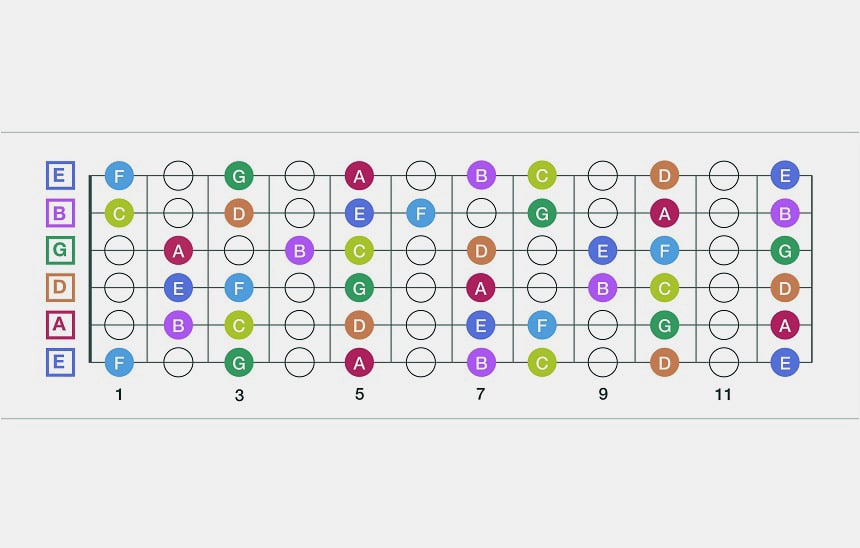If you are learning how to play the violin you will quickly notice that there are no frets. Why don’t violins have frets? Wouldn’t this make it much easier? Well, the answer is “yes” but it would also take away a lot of the different tonal capabilities of the violin. This doesn’t matter so much for a guitar, or other fretted instruments, but it is fair to say that violin can be played with a little more nuance. In this guide, we’re exploring why they don’t have frets and what that means for learning the instrument and playing pieces.
Frets undeniably make it more simple to know where you are located along the fretboard. There is actually quite a lot of science and physics going on that we don’t necessarily think about when we are learning an instrument, the force applied to the strings and the harmonics that are triggered, for instance. We’ve simplified things in this article to help you to understand the reasons behind not having frets. If they make life easier, why would you ever choose to forego them? There are actually multiple reasons for this.

Put really simply, the reason why guitars have frets but violins don’t is that there is more opportunity to play nuanced and varied pieces. When we divide an instrument into frets we equally divide an octave, this produces 12 different sounds which are known as semitones. This is actually a man-made device to simplify music. It isn’t the only way of doing things, and in eastern scales things are approached very differently.
As well as this, it impacts the intonation which is not limited between the frets. You can read more theory regarding harmonics and theory in the Amadeus guide, providing a clear introduction to your strings and how you can get the most out of them.
One of the really simple ways to describe this difference is to compare the flats and sharps. On a guitar, or even on a piano, the way the notes are divided means that some of the notes serve the purpose of being two different notes within two different scales. A violin can play an F and an E sharp differently. While those two things are identical on a piano or guitar, there are some subtle differences on the non-fretted violin. This is also true of other string instruments that don’t have frets like a viola.
One of the things that is a big benefit when it comes to the lack of frets on a violin is the fact that it opens up a lot of techniques that you can’t really do on a guitar or on another fretted instrument.
As you go through the Suzuki Violin School or another set of beginner lessons, you will gradually start to learn bowing techniques that can be used, these simply wouldn’t be possible if you had frets. You can glide and slide between tones in a smooth and nuanced way, adding more character and detail to your playing.
Techniques include a ‘portamento’ when you slide between two different notes to give a “bend” sound, or the ‘glissandi’ technique which is a continuous slide up the fretboard would be harder if there were frets, and wouldn’t sound as smooth.
All of this forms part of the character of the sound. When you hear a violin or viola, you know that it is an orchestral instrument, and you also have a rough idea of how it is going to sound. Frets would change this a shocking amount.
One other consideration is the fact that actually, the notes are very close together in some places. From the 6th position on the strings and further up, there would have to be loads of frets in a very short space, and this would mean that it was virtually impossible to play at this register. By not having these frets in place, you open up more possibilities, and of course, more playing techniques and methods that can be used.
Did you know that some early incarnations of instruments we see as non-fretted actually had moveable frets? Violins are made in a much more simple and straightforward way now, to minimize the maintenance you have to do as a musician. Imagine if you had to manually change the position of the frets to try and get the right tone. It may be a useful marker, but it is also a really confusing and complicated aspect of musicianship that is undeniably tough to get right.
As you can see, there are so many differences between fretted and non-fretted instruments, and the harmonics that are created are just one of the tonal variations that is based on the fact that you have frets.
Frets are certainly a great mechanism when you’re starting to learn any instrument, and one of the huge challenges in the early days of learning how to play a violin is knowing how you can produce the right tone at the right pitch. When you actually delve a little further into it, it is clear to see why violins don’t have frets.
By keeping the strings open, the violin allows for plenty of nuanced playing and more intricate techniques and methods that simply aren’t possible on instruments that have frets. Some people use other methods when learning such as violin stickers to help act as a placeholder, but ultimately, it is all about retaining this ultimate level of control for more intricate playing and techniques like glissandi.
There are Fretted Violins too like the 7 String Fretted Viper & their frets are filed down almost flat, so you play on top of them & they’re not really close together because 1) they’re smaller & 2) the usually extend the scale length quite a bit to make that easier